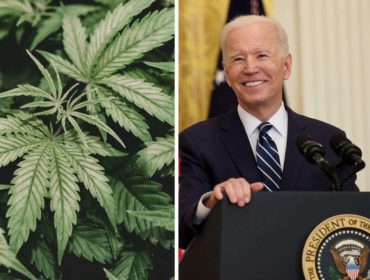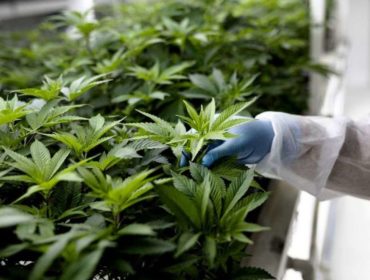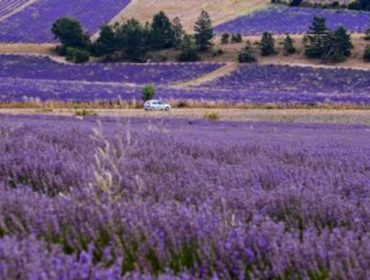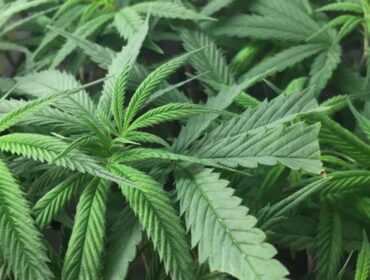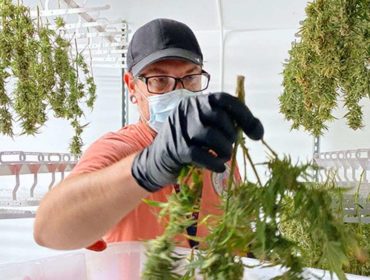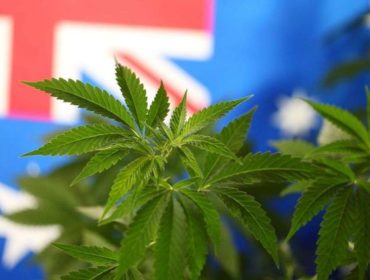Times Are Really, Really Tough: Plummeting Cannabis Prices Strain Small Northern California Farmers
Humboldt County’s cannabis farmers are struggling to break even as prices per pound continue to fall as a result of the oversaturated market. Jason Gellman, owner and operator of Ridgeline Farms in Southern Humboldt County, said he is barely breaking even.
Humboldt County cannabis farmers are drowning in a flooded market. As the price of cannabis continues to fall, small farmers struggling to stay afloat fear for the sustainability of their future.
Jason Gellman, a second-generation cannabis farmer and owner of Ridgeline Farms in Southern Humboldt, has watched the cannabis industry evolve since he was a kid. He admitted that he has an advantage because his brand is well known throughout the region and much of the state. Even still, he said he’s struggling to sell his crop.
“Times are really, really tough for small farmers,” he said. “Most of us are in the red right now and if you are lucky enough to sell your product, it seems to be the average price per pound is around $700 which is way, way down. The county wants their money, the state wants their money, the banks want their money, the trimmers need to be paid and all of the other fees. For a small farmer, it costs around $500 to grow a pound. It’s barely paying the bills.”
In June, the wholesale price for cannabis from last year’s harvest dropped from around $1,200 a pound when the 2021 light deprivation or “dep” crop began to hit the market, according to Humboldt County Growers Alliance executive director Natalynne DeLapp.
“The wholesale price for 2021 deps is between $650 and $750 a pound,” she said. “The wholesale price for 2020 AAA grade flower is between $400 and $500 a pound, otherwise as low as $200 to $400 per pound. Some farmers are having their 2020 harvest returned from distributors because they are unable to sell it. This is after paying for trimming ($70 to $200 per pound), testing and paying state harvest taxes ($154 per pound).”
DeLapp attributed the dramatic fall in price to “massive overproduction” across the state.
“California farmers are producing four to five times more cannabis than our legal market can consume,” she said. “Simple supply and demand economics demonstrates when your supply outpaces your demand, the prices go down. The question of survivability is in question.”
Currently, there are 1,775 acres of cannabis licensed by the state – 435 of which are in Humboldt County – which conservatively produces more than 6 million pounds of cannabis annually, however, California only consumes approximately 2.5 million pounds of cannabis annually, DeLapp said, citing data from the California Department of Food and Agriculture’s 2017 Standard Regulatory Impact Analysis.
“Not all cannabis consumed in California is purchased at legal retailers, so a very conservative estimate is that we’re producing twice what the legal market can consume, but in reality, it’s probably worse than that,” DeLapp explained. “The bulk of this overproduction is attributable to large-scale farms outside the Emerald Triangle, on the Central Coast and elsewhere, where it’s common for single farms to be permitted for dozens of acres. These areas are continuing to bring hundreds of acres of new production online despite the fact that there’s no market for new large-scale production.”
How did we get here?
To understand how cannabis producers reached this point of overproduction, DeLapp said it is essential to understand the history of cannabis in California.
“The cannabis industry began the process of engaging with local and state legislature to develop a regulatory structure for cannabis,” she explained. “Proposition 215 was passed in 1996, which authorized the compassionate use and cultivation of cannabis but it was largely unregulated until the Medical Marijuana Regulation Safety Act was signed by law by Gov. Jerry Brown in October 2015.”
Simultaneously, Humboldt County was developing the state’s first cannabis land use ordinance in anticipation of state legalization which the Board of Supervisors signed into law in February 2016. By August 2016, more than 2,500 pre-existing farms had signed up with the county and initiated the process of coming into compliance.
Proposition 64 legalized the recreational use of cannabis in November 2016.
“Prop. 64 eliminated the prohibition on vertical integration and also made promises to the cannabis industry that unlimited cultivation would not be allowed until 2023,” DeLapp said. “…Starting January 2018, the acreage cap was eliminated. When that acreage cap was eliminated it allowed CDFA to start accepting stacked licensing which is what allowed for these very, very large farms to come online. When we’re asking why there is an overproduction problem it is because of Prop. 64 and the removal of the acreage cap that failed to rein cannabis production in the state of California.”
Come 2023, the state will allow even larger “Type 5” cultivation licenses to be issued. Gellman fears this shift could open the door for unlimited cultivation.
“We got to hold the line on prices, there has to be a cap on square footage or a cap on licenses,” he said. “If the state allows unlimited cultivation come in 2023, we can just kiss this industry goodbye but right now we still have a fighting chance.”
Calls for action
While small farmers like Gellman are demanding a cap on acreage, DeLapp leaned toward a shift in strategy and called for short and long-term solutions to better support small farmers.
“The light at the end of the tunnel is interstate and international commerce,” DeLapp said. “We’re still probably two to three years away from that, so the big question is how the county can support farmers to keep their heads above water until then, and how we can use the time we have to build a craft Humboldt cannabis brand so that we hit the ground running when those new markets open up.”
The Humboldt County Grower’s Alliance is hoping to win the bid to market the county’s cannabis. DeLapp said the best thing the county can do to build long-term resilience for the industry is to go all-in on developing her organization’s strategy.
“Humboldt’s cannabis businesses cannot compete in a commodity market,” she said. “What makes Humboldt special is our terroir, our story, and our history — that cannot be replicated elsewhere.”
As the county works towards these goals, farmers need relief.
“Humboldt County seems to be one of the harder counties to get your full permits. That came with so many costs and so much money we’ve had to put into the permitting process which drained a lot of our savings prior to this,” Gellman said. “I still haven’t completed all of the county’s requirements for my permit after six years and I have a (9,600 square foot) farm. … It just seems like everybody’s taking from the farmer and we aren’t making the money back.”
Every dollar counts, DeLapp said.
“The county can support efforts at the state and federal levels to bring relief to farmers,” she said. “At the state level, it’s essential that the cultivation tax is eliminated — no matter how low the price of cannabis drops, the state still taxes cultivation at a flat rate of $154 per pound. And at the federal level, we need a legalization bill that recognizes cannabis as an agricultural activity which would provide protection for small farmers rather than pushing the industry towards further consolidation.”
DeLapp also called on the county to give farmers some wiggle room to complete compliance agreements for “big-ticket items,” such as road improvements and culvert replacements and for the county’s Planning and Building Department to reassess how it bills for services related to cannabis permitting.
Gellman agreed, noting that the county and state should provide incentives for smaller farms.
“If you’re 10,000 square feet and under there should be some kind of tax breaks available since you’re growing less product,” he said. “…There are a lot of really good people that have given their life savings to get their farms in order and because of that I blame the county because it could have been a lot easier but they just keep taking and taking.”
As bleak as things may seem, Gellman said he doesn’t plan on giving up his farm.
“I’m so highly invested and this is what I know, this is what a lot of us know and what a lot of us have been doing our whole lives, so we’re not just going to start a new career all of the sudden in our 40s,” he said. “We’re still in a beautiful place, we’re surrounded by friends and family, so we’ll make it. We’ll survive one way or the other. We were very poor growing up as young kids here and we still had a great childhood, we’ll just have to change our ways a little bit and make sure we keep the quality of our product. It’s quality over quantity.”
Humboldt County Planning and Building director John Ford did not respond to the Times-Standard’s request for comment ahead of print deadline.
Source: https://www.siliconvalley.com/2021/08/23/cannabis-farmers-barely-breaking-even-as-price-per-pound-plummets-2/




